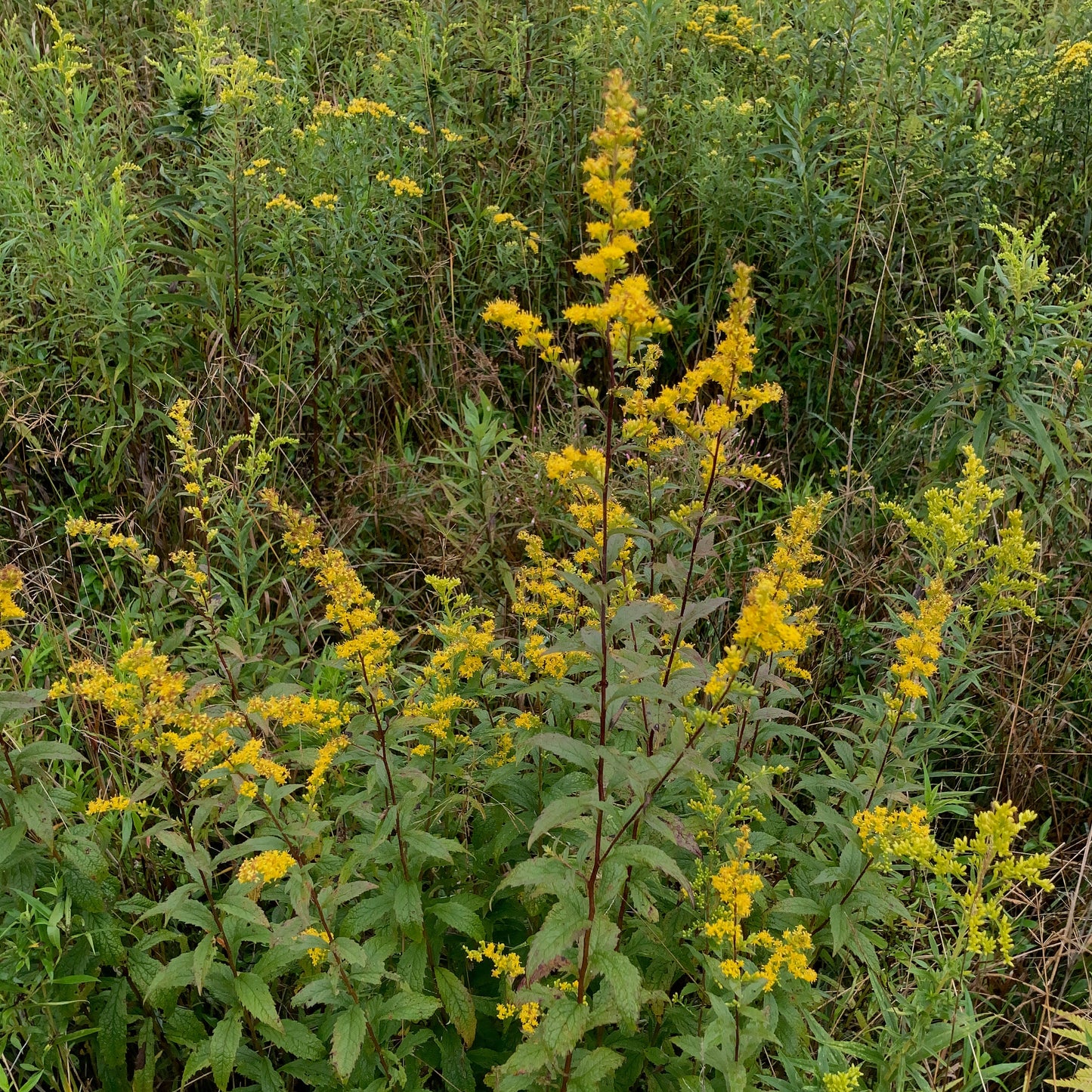Wrinkleleaf goldenrod
Solidago rugosa
Solidago rugosa
Couldn't load pickup availability
Sun/shade: Full sun to part shade
Soil moisture: Dry to wet soil
Height: 3-5'
Flowering period: September
Deer resistance: Medium
After absorbing the sun’s rays for months, wrinkleleaf goldenrod erupts in golden-yellow color in September, as though saturated with light. The blooming of hundreds of yellow flowerheads along the plant’s branches is a windfall for pollinators. Goldenrods are among the most important plants for supporting pollen-specialist bees, which have strict pollen requirements. Considering that 20 – 45% of native bees are specialists, healthy bee populations can only be maintained by planting the plants that host these bees.
An inhabitant of meadows and open-canopied woodlands, wrinkleleaf goldenrod is quite adaptable, performing well under full sunlight to partial shade and in moderately wet to moderately dry soil. The plant will attain a mature height of 3-6’ and will likely spread via rhizome to form a small colony, though it is generally not aggressive. Look for wrinkleleaf goldenrod to produce its bright yellow blooms for approximately 1 month in late summer or early fall. For a stunning pairing, plant wrinkleleaf goldenrod with New England aster or purple-stemmed aster.
Photo by Julie Slater.

